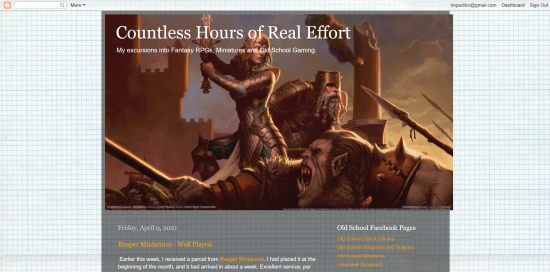I recently wrote an article about resizing one company's 3Dmodels to fit better with another company's dungeon tiles. It was more of a 'can this be done?' article than a practical exercise.
So this time, I'm looking at a practical application.
I have a large number of Dwarven Forge dungeon tiles. One deficiency of their dungeon system is that the tiles do not clip or fasten together, and even though the tiles are heavy and fit well to each other, I find that the edges of the dungeon tend to wander as the dungeon is gamed with and wargamers bump into it.
On the other hand, the Fat Dragon tiles clip together and can't be bumped apart.
So why not combine the best of both systems? Make an 'outer wall' of the clippable tiles (resized to better fit), and use the loose tiles for the interior?
My pilot project was to print out enough 3Dprinted dungeon tiles to form a dungeon edge and corners, add spacers to the tile bottoms, and paint up the tiles.
This is the finished 'dungeon edge' prototype, painted and clipped together.
This is the lefthand corner section…
…the center section…
…and the righthand corner.
Here you can see the tiles from the bottom, with their spacers to bring them to the same floor height.
All dungeon tiles have some gaps between the pieces, but I am a little puzzled why I'm getting gaps between some wall pieces which seem to be tightly clipped together. My best guess is that it's some combination of warped tile bottoms from the 3Dprinting process and the spacers I've added.
To make sure the tiles fit well together, I've trimmed off any 'spread' on the bottom edge of the tiles from the 3Dprinting process. Nevertheless, I have a few tiles which do not clip together tightly.
Now, I've filled the inside row with Dwarven Forge tiles.
The lefthand corner…
…the center section…
…and the righthand corner.
The 3Dprinted tiles are still a bit larger than the other tiles. In the photo above, I've slid all of the non-3Dprinted tiles to one side so you can see the total discrepancy across eleven tiles. So there is still a small bit of 'slop', that could perhaps be reduced if the 3Dprinted tiles were resized slightly smaller.








